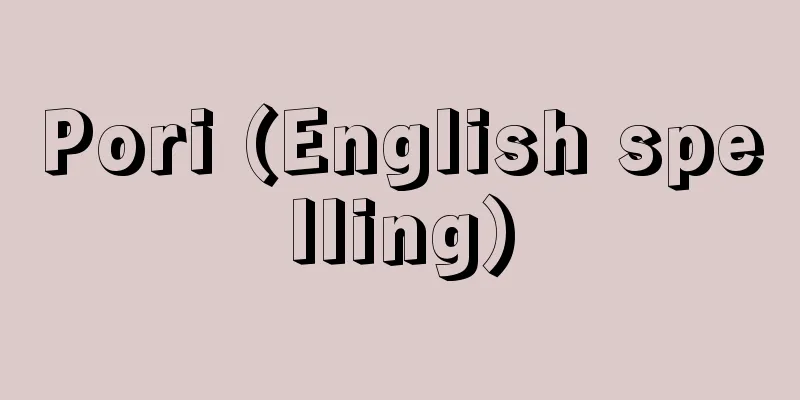Kashima Shrine

|
Located in Miyanaka, Kashima City, Ibaraki Prefecture. Takemikazuchi no Okami is enshrined here. Takemikazuchi no Okami is said to have descended from Takamagahara to Izumo Province (Shimane Prefecture) together with Futsunushi no Kami (the deity enshrined at Katori Shrine) prior to the descent of the heavenly grandson, under the orders of Amaterasu Omikami, and negotiated with Okuninushi no Kami to hand over the country. It is said that he also protected the Emperor Jimmu when he entered Yamato Province (Nara Prefecture). After Emperor Jimmu ascended to the throne, he had the deity enshrined here as a sign of gratitude to the gods, which is said to be the origin of the main shrine. The Hitachi no Kuni Fudoki records that later, during the reign of Emperor Sujin, a great god appeared on Mount Osaka and gave a divine message to Nakatomi no Kamukikatsu no Mikoto, who then offered many offerings, including a large sword, a spear, and an iron bow. It also records that during the reign of Emperor Yamato Takeru no Mikoto, three boats were donated by divine revelation. The main shrine as a war god was probably built along with the Yamato Imperial Court's management of the east. The Nakatomi clan has served the shrine since ancient times. The Fudoki records 65 Kobe kombins, but the Shinsho Kakuchokakusho records 105 households as divine seals in 786 (Enryaku 5). During the Nara period, the word "Kashima Dachi" was coined when defenders from the eastern provinces who were heading out to defend Kyushu would first visit the main shrine before setting off. It is believed that the reason this word came to be widely used to mean the departure of a journey is because the main shrine has been known since ancient times. In 812 (Kōnin 3), along with Sumiyoshi and Katori shrines, a system of Shikinen Sengu (a period of rebuilding the shrine every 20 years) was established, and by around 866 (Jogan 8), there were 38 descendant shrines in Mutsu Province, and there was also a shrine temple at that time. Under the Engi system, it was ranked as a Myōjin Taisha and received offerings on Kinen, Tsukinami, and Niiname. Since then, even during the Heian period, it was highly revered, including receiving offerings once in a lifetime from the imperial family, and the offering envoys were called "Kashimashi" and made a round trip by horseback, taking 15 days each way. Ichinomiya, Hitachi Province. During the Kamakura period, Minamoto no Yoritomo revered the shrine, and many samurai families also revered it, but after the mid-Muromachi period, donations of offerings from the Imperial Court and samurai families stopped, so the shrine's monk, Ryokai Shonin, head priest of Mitarai Ryosenji Temple, traveled around the country to collect donations and build the shrine buildings. However, after that, the Satake clan donated land to the shrine, and in the Edo period, Tokugawa Ieyasu donated land to the shrine again, and thereafter the land was increased to 2,000 koku. The main hall built by Ieyasu in 1605 (Keicho 10) is the current Okumiya Shrine, and in 1619 (Genwa 5), Tokugawa Hidetada built the current main hall, worship hall, and offering hall (all of which are national important cultural properties), and in 1634 (Kan'ei 11), Tokugawa Yorifusa, the lord of Mito Domain, built the tower gate (national important cultural property) and the Imi-gaki fence. Under the Meiji system, it became a Kanpei Taisha shrine. It has many treasures, including the national treasure straight sword and black lacquer plain pattern large sword mounting. The annual festival is the Shinko Festival on September 1st, and the Chochin Festival is held in the evening. Other festivals include the Saito Festival on March 9th and the Ofuna Festival on September 2nd in the Year of the Horse. [Junichi Kamata] "Kashima Shrine" by Azuma Makoto (1968, Gakuseisha)" ▽ "Kashima Shrine" (1980), edited and published by the Kashima Shrine Office National Diet Library Hiroshige Utagawa "Illustrated Guide to Famous Places in the Sixty-odd Provinces: Hitachi and Kashima" Source: Shogakukan Encyclopedia Nipponica About Encyclopedia Nipponica Information | Legend |
|
茨城県鹿嶋市宮中に鎮座。武甕槌大神(たけみかづちのおおかみ)を祀(まつ)る。武甕槌大神は、天照大神(あまてらすおおみかみ)の命令を受けて、経津主神(ふつぬしのかみ)(香取(かとり)神宮の祭神)とともに、天孫降臨に先だち、高天原(たかまがはら)より出雲(いずも)国(島根県)に降(くだ)り、大国主神(おおくにぬしのかみ)と国譲りの交渉をしたと神話で語られる神で、神武(じんむ)天皇の大和(やまと)国(奈良県)入国にも天皇を守護したと伝えられるが、その神武天皇が即位ののち、神恩感謝のため当地に祀らせたのが本社の起源と伝承する。『常陸国風土記(ひたちのくにふどき)』に、そのあと崇神(すじん)天皇の代になり、大坂山に大神が現れ、中臣神聞勝命(なかとみのかむききかつのみこと)に神託し、それにより天皇は大刀(たち)、鉾(ほこ)、鉄弓など多くの幣物を奉ったと記し、さらに日本武尊(やまとたけるのみこと)のとき、神示により舟3隻を奉納したと記している。大和朝廷の東方経営とともに、武神としての本社が創建されたのであろう。古くより、中臣氏が奉仕している。『風土記』に神戸65烟と記すが、『新抄格勅符抄』に、786年(延暦5)に神封105戸と記す。奈良時代、九州防備に赴く東国の防人(さきもり)が、まず本社に詣(もう)でて出発したことより「鹿島立(だ)ち」の語が生じ、それが広く旅立ちの意に用いられたのは、本社が古くより知られていたためとみられる。 812年(弘仁3)住吉(すみよし)・香取社とともに、20年に一度の式年遷宮の制度が定められ、866年(貞観8)ころには陸奥(むつ)国に苗裔(びょうえい)神38社があり、またそのころ神宮寺もあった。延喜(えんぎ)の制で名神(みょうじん)大社に列し、祈年(きねん)・月次(つきなみ)・新嘗(にいなめ)の奉幣を受けている。以後、平安時代にも皇室より一世一度の奉幣など、厚い崇敬を受けたが、その奉幣使を「鹿島使」とよび、駅路片道15日、乗馬で往復した。常陸国一宮(いちのみや)。鎌倉時代には源頼朝(よりとも)が崇敬し、あと武家も多く崇敬したが、室町中期以降、朝廷・武家の奉幣寄進がとだえ、ために社僧御手洗(みたらい)涼泉寺(りょうせんじ)別当良海上人(りょうかいしょうにん)が諸国を行脚(あんぎゃ)し、浄財を集め社殿造営にあたるようなこともあった。しかし、そのあと佐竹氏が神領を寄進、江戸時代に徳川家康がまた社領を寄せ、以後朱印領2000石となった。1605年(慶長10)家康造営の本殿は現在の奥宮であり、1619年(元和5)徳川秀忠(ひでただ)により、現本殿、拝殿、幣殿(いずれも国重要文化財)などが造営され、1634年(寛永11)水戸藩主徳川頼房(よりふさ)により楼門(国重要文化財)、忌垣(いみがき)などが構築された。明治の制で官幣大社となる。国宝の直刀・黒漆平文大刀拵(くろうるしひょうもんたちこしらえ)など宝物が多い。例祭は9月1日の神幸祭で、夜に提灯祭(ちょうちんまつり)が行われ、ほかに3月9日の祭頭祭(さいとうさい)、また午(うま)年9月2日の御船祭(おふなまつり)などがある。 [鎌田純一] 『東実著『鹿島神宮』(1968・学生社)』▽『鹿島神宮社務所編・刊『鹿島神宮』(1980)』 国立国会図書館所蔵"> 歌川広重『六十余州名所図会 常陸 鹿島… 出典 小学館 日本大百科全書(ニッポニカ)日本大百科全書(ニッポニカ)について 情報 | 凡例 |
<<: Kashima faith - Kashima faith
>>: Kajima Construction Co., Ltd.
Recommend
Organic pigment
…An insoluble powder used for coloring purposes, ...
"Kagamiyama" - Kagamiyama
…It is also written as “Kagamiyama Kyu-nishiki-e”...
Cat People
...As a result, playing a cat character came to b...
Moriyama [city] - Moriyama
A city in southwest Shiga Prefecture. It was incor...
kārum (English spelling)
…Since 1931, systematic excavations have been car...
Law - Law
〘Noun〙[一] (Hafu:)① Laws and rules. National law an...
maître (English spelling)
…Of these, doctor (Latin: doctor) is derived from...
Inequality - Inequality
The symbols >, <, ≧, ≦ that show the relati...
Dogfish - Dogfish
A general term for marine fish belonging to the Sq...
Kamigotō Airport - Kamigotō Airport
An airport in Shinkamigoto Town, Minami Matsuura D...
Jotuni, Marj Gustava
Born: April 9, 1880 in Kuopio Died: September 30, ...
Yahweh (English spelling)
The name of the God of Israel revealed to the prop...
Cutting the thread - Kyogire
...As a result, scrolls written in ancient script...
Shingo - Shinkyo
A prefecture-level city in the upper reaches of t...
Tenjiku
[1] In China and Japan, the ancient name of India....



![Kamikitayama [village] - Kamikitayama](/upload/images/67cb3ee508c74.webp)





